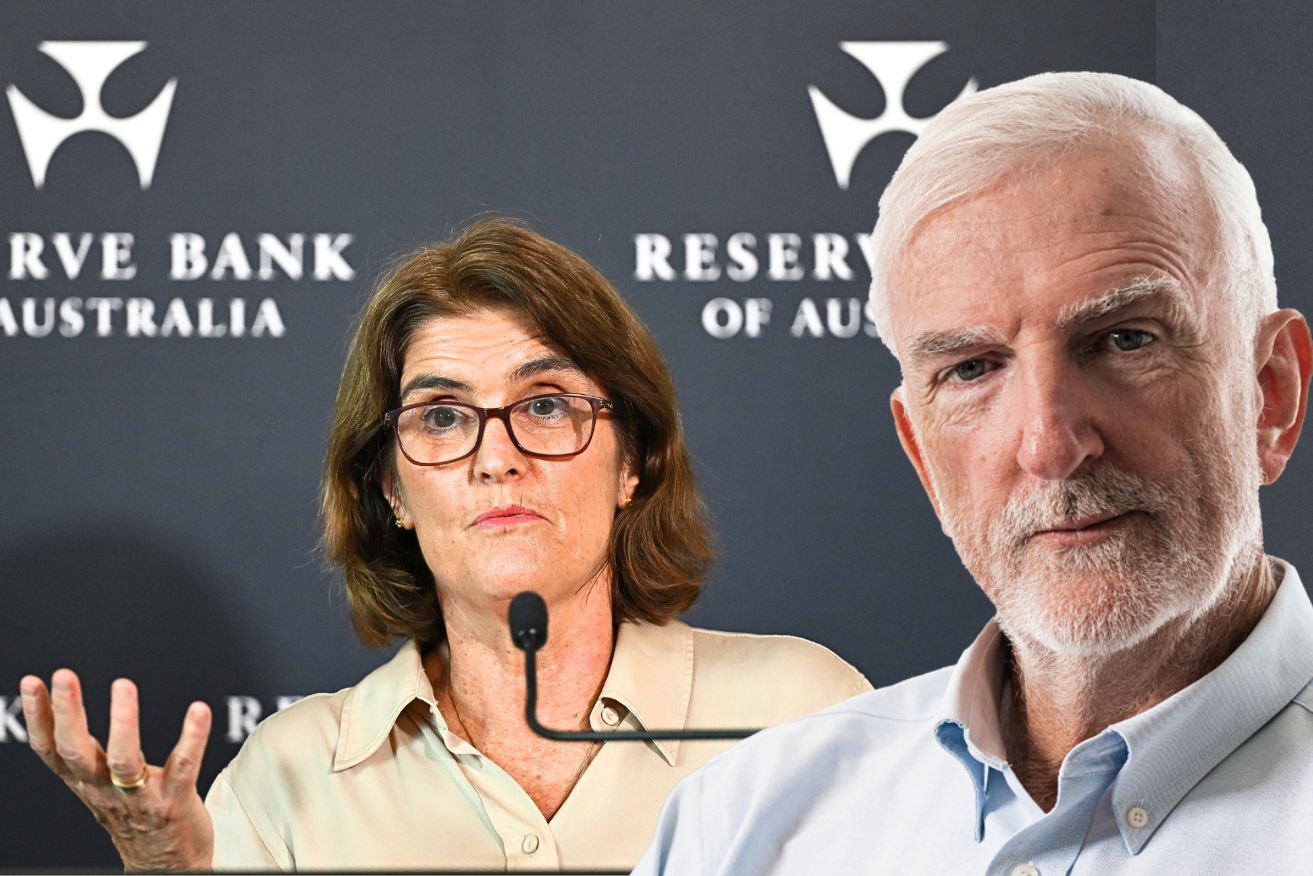Michael Pascoe: Same old tunnel-vision RBA, blundering on


The RBA continues to ignore the data showing it has done enough, Michael Pascoe writes.
Same old same old from the Reserve Bank – a captive of the expectations it creates, locked in the narrow vision of its brutally blunt and inefficient interest rate cudgel, lacking the confidence required to admit a mistake.
So by leaving its cash rate steady again on Tuesday, the RBA is continuing to tighten the monetary policy screws as the November hike works its way through the system.
This is despite the data that is supposed to drive the RBA saying it has done enough, maybe more than enough.
And all the while our central bank, Treasurer and Treasury are happy to operate under the lie that real wages finally rose last year.
They did not.
Wages go backwards
On the measure headlined by Treasurer Jim Chalmers last month, the wage price index, really real wages – that is what people take home after inflation and taxation – went backwards last year by about half a per cent.
I’ll come back to that to explain it for the dummies who apparently pay no attention or wilfully pretend ignorance i.e. the aforementioned RBA, Treasurer and Treasury.
And this is ignoring the loss of the low-to-middle income tax offset – a fat $1500 for people on incomes of $48,000 to $90,000.
First though, there is the smokescreen performance by the RBA governor about rising unemployment.
The show went on again on Tuesday. All that was missing was a claim that the RBA was caring and sharing when it comes to the unemployed.
No. When it’s a choice between rising unemployment and getting inflation back in the mandated zone, there is no choice.
Talk is cheap
All the talk about “wanting to hold on to gains” is just that – talk. It’s a smokescreen for the harsh reality of monetary policy being a second- or third-rate means of tackling inflation.
The RBA has previously admitted it has no idea what the sustainable “full employment rate” might be, so it will keep belting the economy to get its inflation outcome with no real regard for unemployment.
Governor Michele Bullock went through the PR words during Tuesday’s media conference, but she gave a straight answer when asked if she was worried about the Australian economy.
“I’m worried about inflation,” she replied.
And that’s the truth about the RBA. For all the touchy-feely window dressing of the risible RBA review, the RBA is what it is: Concerned only about the inflation rate.
Declaring an interest in “full employment” is a con.
Firstly, it just sounds better than its corollary, the “unemployment rate”.
Secondly, and more importantly, full employment is whatever it turns out to be after inflation falls to between 2 and 3 per cent on the (deficient) consumer price index measure.
The RBA doesn’t target “full employment” – it can’t, it doesn’t know what it is. It is merely the detritus washed up after exercising monetary policy.
Living up to expectations
So the RBA will stick with the money market’s expectations of the RBA and start trimming rates a little in the second half of the year when it’s confident the economy is so battered it can handle real wages finally rising in the 2024-25 financial year thanks to the stage-three tax cuts, not the wage price index.
A thing about those tax cuts: They have a one-off impact. As the RBA likes to deflect (because it dares not show the independence of actually researching and commenting on fiscal policy), they are “factored in” for a year and then we move on.
Re the reality of real wages still going backwards, the usual simplistic commentary about the wages price index ignores taxation.
The WPI last year rose by 4.2 per cent while the CPI rose by 4.1 per cent, so Treasurer Chalmers crowed:
“Australia has recorded a return to annual real wages growth faster than expected, according to the Wage Price Index released by the Australian Bureau of Statistics today. Real wages growth is back, and ahead of schedule.”
Simple example
No. I’ll give one example to demonstrate. There are much worse ones, given the way our tax-and-transfer system operates, but this will do.
Keeping it simple, someone on average weekly full-time ordinary-time earnings in 2022 was paid $94,000 for the sake of round figures, which was $72,983 after income tax.
If that person scored the WPI increase of 4.2 per cent, their pre-tax income rose to $97,948. Their after-tax income – what they take home, what actually counts for the potential to maintain living standards – would be $75,648.
The after-tax increase – $2665 – is a 3.65 per cent rise, still well below the CPI increase of 4.1 per cent.
Real wages went backwards. Again. And then most people also lost that low-to-middle income tax offset.
No wonder consumption is weak. No wonder we are in our third quarter of a per capita recession and will record at least a fourth.
After the February RBA board meeting, Governor Bullock declared the November rise wasn’t a mistake.
On Tuesday, in answering a better worded question, she declared it wasn’t unnecessary.
Like “full employment”, the truth is that the RBA doesn’t know if it was or it wasn’t.
And that’s me being kind.








